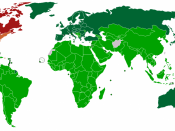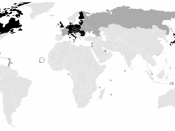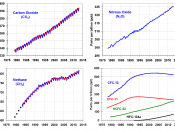The purpose of this paper is to give a clearer understanding to the reader about the amplifications of the Kyoto Protocol. Since the protocol has not yet come into force, much of the information documented in this paper is prediction, possible bias or unproven theory and nothing will be certain until the protocol has been through all the necessary steps. The Kyoto protocol, with or without support from the United States, will affect short-term global economic growth and will aide in the improvement of the environment worldwide.
In December 1990, the United Nations General Assembly began discussions on climate change starting with the first round in May 1992, just in time for the Earth Summit Conference in Rio de Janeiro. The first round agreement to reduce greenhouse gas emissions was adopted in March 1994, and the subsequent negotiations of the agreement became known as the Kyoto Protocol in December 1997.
The current form of the Kyoto Protocol has already been ratified (passed by the government) by 51 nations as of March 28, 2002. (BMO Nesbitt Burns: The Kyoto Uncertainty; April 11, 2002). Under the terms of the agreement, participating countries have to reduce greenhouse gas emissions by 5.2 percent from their 1990 levels by 2008-2012. Greenhouse gases is a term used for gases (like carbon) which are mainly generated as a result of burning fossil fuels like coal, gas and oil. In order for the treaty to come into force it must be ratified by at least 55 countries representing 55% of 1990 levels of greenhouse gas emissions. Only economically developed countries are members of the Kyoto Protocol, therefore large contributors to greenhouse gas emissions such as China, India and Mexico are not participating in this agreement. (http://www.umwelt-deutschland. de/index_englisch.html).
The agreement places limits on six greenhouse gases: carbon...


